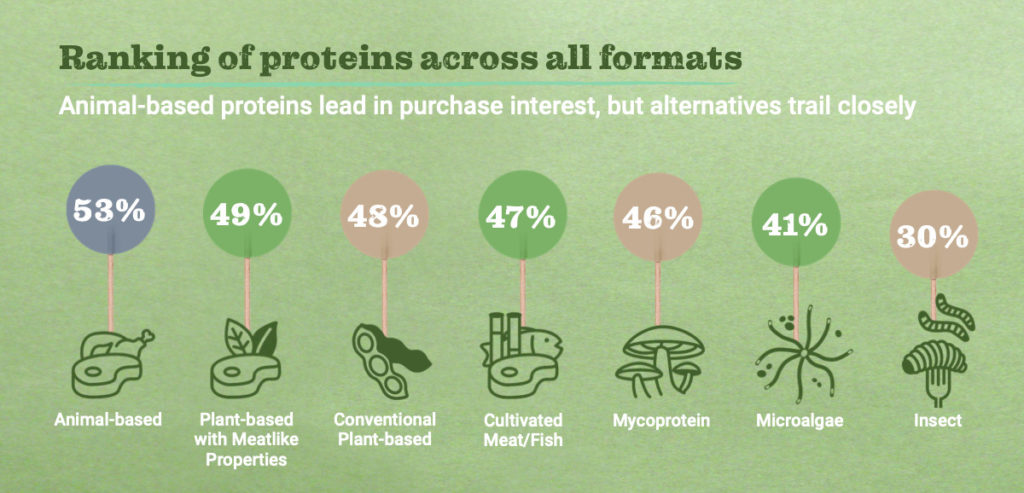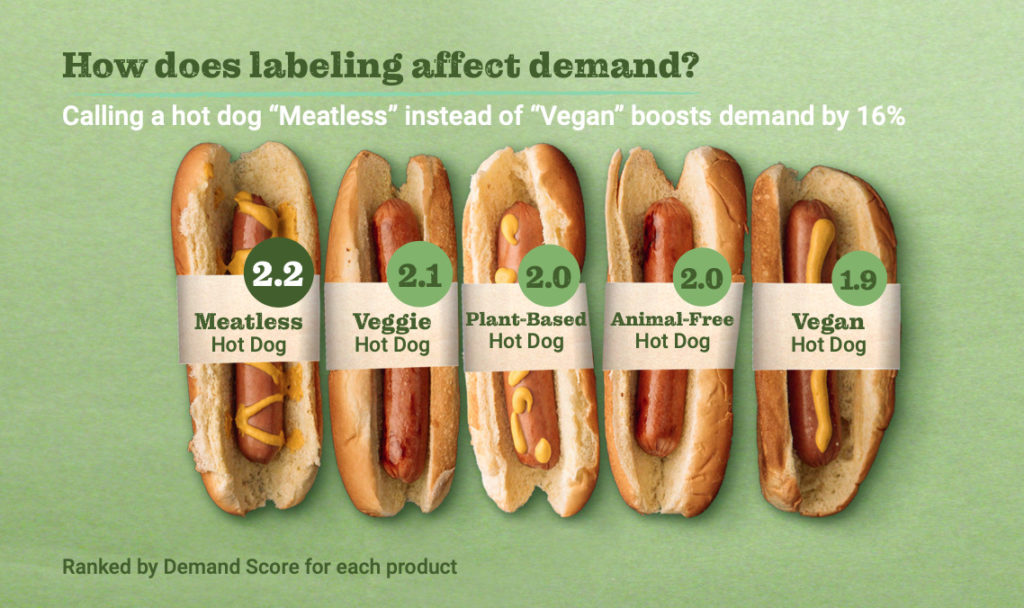4 Mins Read
A new study, conducted by Veylinx, has revealed consumer insights critical to the growth of the alternative protein sector. A key takeaway for brands looking to entice new customers is confirmation that price and taste are bigger drivers than animal welfare or the environment. It was also identified that certain foods, namely burgers and hot dogs, are at saturation point but there is demand for other meat-free alternatives, including seafood and jerky. Overall, plant-based protein that mimics meat remains a consumer favourite.
Participants in the U.S.-based study were largely non-vegan and vegetarian. Just five percent aligned with the labels. This did not prevent the majority (77 percent) of respondents saying that they could be persuaded to buy meat alternatives more regularly.

Young consumers support legislative change
The research was conducted in March 2022 with 3,538 participants all over the age of 18 taking part. The study looked for consumer attitudes surrounding seven proteins, including conventional meat, plant-based alternatives and cultivated developments. It focussed on seven food formats for easy comparison: burger patties, sushi, nuggets, filet mignon, jerky, bacon and lasagna.
Animal-based protein remains the most popular option with 53 percent of purchase interest but plant-based came a close second at 49 percent. One of the bolder findings was that young consumers are supportive of government policies being initiated to force dietary change.
37 percent of all study participants revealed they would support a 10 percent levy on meat, to reduce consumption. Additionally, 51 percent claimed they felt the government should subsidise alternatives to animal protein. Breaking these findings down into age brackets, Gen Z was shown to be pushing for formal change, with 62 percent backing a meat tax. 71 percent agreed with alternative protein subsidies.

How products are labelled matters
Food vernacular is identified as playing a critical role in meat-free uptake. Using hotdogs as an example, the study discovered that labelling items as “meatless” instead of “vegan” increased interest by 16 percent. “Vegan” proved to be the least popular term, with “veggie”, “plant-based” and “animal-free” generating more positive responses.
Labelling preferences are connected to underlying reasons for considering meat-free purchases. The study found that 42 percent of consumers choose alternative protein for health reasons, followed by 35 percent, liking the taste. Fewer than 30 percent cited animal welfare or the environment as reasons for buying.
23 percent of all participants said that nothing, labelling included, could persuade them to buy more meat alternatives. Gen Z, again, stepped forward as a driving demographic to reveal that 87 percent could be convinced to buy more leat-free products.
Though welfare and climate change were low on consumers’ priority lists, the negative connotations were shown to reduce demand for conventional meat. In this instance, animal welfare proved the most effective in labelling, demonstrating a 7 percent drop in meat demand.

What the findings mean for the alternative protein sector
“While we may be approaching a saturation point for products like burger patties and hot dogs—making it difficult to win shelf space and market share—our research shows there are still plenty of categories like seafood, jerky, and ready-to-eat meals where consumers are seeking more varied plant-based options,” Anouar El Haji, CEO of Veylinx said in a post-study statement. “Brands can succeed in these categories by launching products that are delicious and priced competitively, even if they don’t duplicate the taste and texture of meat. We also found that consumers are willing to buy unfamiliar protein innovations like mycoprotein, microalgae, and even edible insects—especially when they are incorporated into packaged foods like frozen lasagna and jerky.”
The study appears to confirm that there is space for all protein types and that conventional meat might be usurped from the top spot, by younger generations of consumers.

Gen Z as the change-makers?
Gen Z are the legislators of the future and as they are now showing support for taxing foods they deem as unhealthy, systemic change is not an unreasonable prediction. It has been claimed before that the young consumers are spending more on food than anything else and pledging their money to brands they deem worthy and increasingly, the demographic is making sustainable moves.
Earlier this year it was revealed that China and India’s Gen Z is more sustainably-minded than those in the U.K. and U.S. This ties in with the alternative protein market neatly, as India has already been identified, By Kerry, as a key driver, at least for plant-based foods. China is increasingly demonstrating interest in growing its domestic alternative protein industry as well.
Lead photo by Pablo Merchan Montes at Unsplash.




